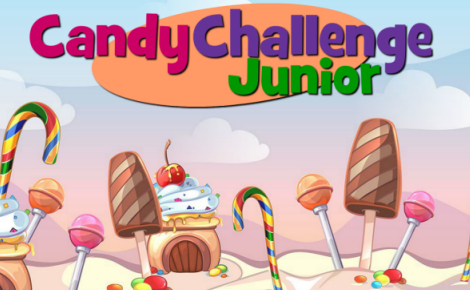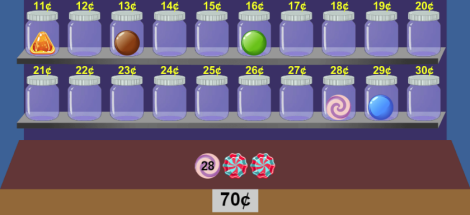Algebraic thinking is one of the key concept domains within the K-5 common core math standards. Using a symbol to represent missing quantities is introduced as early as first grade. In 3rd grade math students are asked to represent two step word problems using a letter for the unknown quantity. A typical story problem might look like this:
The candy store has 70 chocolate bars. 28 chocolate bars were sold in the morning. The remaining chocolate bars were placed evenly into 2 packages. How many chocolate bars were in each package?
We might ask students to write an equation that represents the story problem, for example, 2 x A + 28 = 70. Then students would find the value of A. Even with the aid of a story, this is far too abstract for many students. Children come to our classrooms bursting with creativity and curiosity, excited to learn and explore. To fully grasp math concepts, children need to experience math firsthand, to immerse themselves in interesting problems, to own the process in some way. The challenge for us, as teachers, is to find ways to connect children’s innate curiosity with the concepts we want them to learn.
What if 2 x A + 28 = 70 looked like this? Now we have their attention!
Where oh where do the candies go? Solve each challenge and soon you will know!
Our math game series, Candy Challenge, presents algebraic thinking problems in the context of a candy store mystery. The store has 30 different candies but the price of each is unknown. The shelves contain empty jars, labeled 1¢ to 30¢. The goal is to find the price of each candy and place it in the correct jar. To do that, students must solve progressively more difficult number puzzles. These visual number puzzles are actually algebra problems in disguise.
Candy Challenge Pro invites students to solve 18 algebra problems and is best suited for grades 4+. Candy Challenge Junior provides simpler challenges that are ideal for grade 3 students and younger students who may be more advanced. Candy Challenge Practice is recommended for teachers who want to explore these math tasks with the whole class. There are three problem solving levels to try and the problems can be displayed on a whiteboard.
The key to helping our students succeed with algebraic reasoning is to provide a wide variety of open-ended tasks and learning games for children to explore. The more experiences they have, the easier it will be for students to make connections when more formal algebraic thinking is introduced in middle school and beyond. Look for tasks that can be differentiated to accommodate a wide range of abilities.
Are you planning lessons around the common core? Introduce algebraic thinking to your students with the Candy Challenge series of math games. Be sure to have a few sweets on hand when you do!
For more ways to bring algebraic thinking into your classroom, please try the following games:
Algebraic Reasoning
Candy Challenge Junior
Chandy Challenge Practice
Chandy Challenge Pro
Deep Sea Math Mystery
Weigh the Wangdoodles




